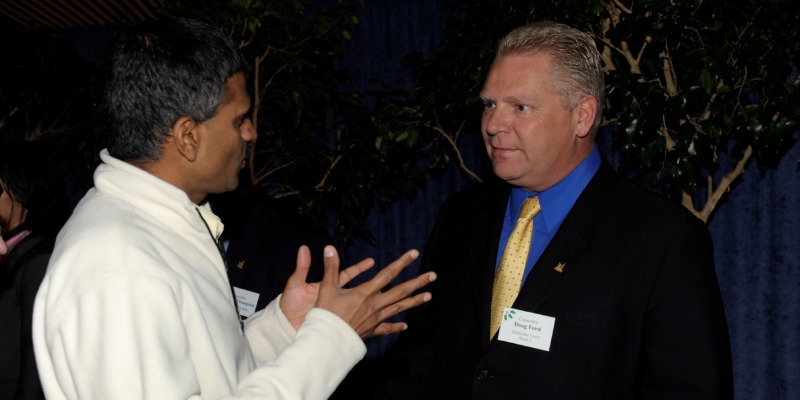On spending and deficits—if nothing changes, nothing changes

Last week, Finance Minister Vic Fedeli tabled Ontario’s Fall Economic Statement. This “mini-budget” was an opportunity for the Ford government to get serious about putting provincial finances on more sustainable footing. Instead, on spending and deficits, the budget represents more of the same of what we have seen from Queen’s Park under previous management.
Indeed, despite sharp rhetorical differences between party leaders on the campaign trail, the early evidence suggests the new government’s fiscal strategy will largely reflect policy continuity from its predecessor. The Ford government did lightly tap the brakes on spending growth, cancelling a number of election-year spending commitments made by its predecessor. But these cancellations must be viewed in context. The Wynne government’s 2018/19 budget called for provincial government program spending (all spending other than debt interest payments) to increase by 6.1 per cent this year.
In its mini-budget, the Ford government cancelled $3.2 billion worth of provincial spending growth planned for this year, largely by eliminating planned spending associated with the previous government’s climate change plan.
Even with these cancellations, however, spending will still be up markedly this year. In fact, nominal program spending is still forecasted to increase by 4.8 per cent from 2017/18 levels. This is a slightly lower rate of growth than the Wynne government had planned, but it’s still slightly higher than what’s needed to offset the combined effects of population growth and inflation (4.3 per cent) and higher than the nominal rate of economic growth in the province (3.8 per cent).
What’s more, perhaps surprisingly, a 4.8 per cent spending increase in the Ford government’s first year is still faster than the rate of spending growth (on average) in the last three years of the Wynne government (4.4 per cent). In short, far from reforming and reducing spending, the Ford government in its first year is essentially maintaining the rate of spending growth that prevailed in the Wynne government’s final years.
Unsurprisingly, this continued spending growth (relative to last year) means the deficit likely won’t be going anywhere. Indeed, Ontario’s deficit this year is projected at $14.5 billion—virtually identical to the pre-update status quo.
It’s possible that when the spring budget rolls around the Ford government will change course and take meaningful steps to reform and reduce spending to quickly shrink the deficit. But rhetorical signals suggest not. Indeed, last week’s update explicitly says the government’s approach to deficit-reduction will be “modest” and provides no indication of when it will commit to balancing the books.
Thus, the mini-budget suggests, on deficits and spending, policy continuity will prevail. Remember, the Liberals also planned a very modest approach to deficit-reduction, based on trying to hold spending growth down (without ever cutting it) while hoping for revenue growth to close the gap for them.
This approach led to persistent deficits and rapid debt accumulation over the past decade. Its continuance will mean more of the same.
There’s an old saying “if nothing changes, nothing changes.” For the time being, the Ford government has not signalled a break with its predecessor’s approach to spending and deficits. Until that changes, there’s no reason to expect better results.
Author:
Subscribe to the Fraser Institute
Get the latest news from the Fraser Institute on the latest research studies, news and events.

